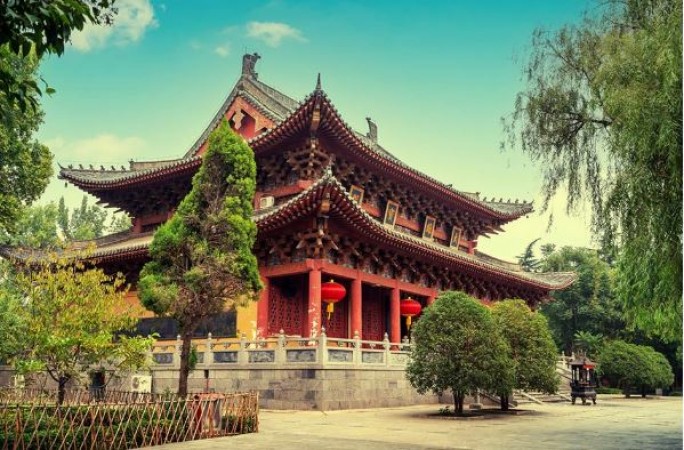
The White Horse Temple, also known as "Baima Temple" in Chinese, holds a significant place in Chinese history and culture. Located in the central province of Henan, near the ancient capital of Luoyang, the temple is considered the cradle of Buddhism in China. With a history spanning over two millennia, the White Horse Temple stands as a symbol of cultural exchange, religious devotion, and architectural splendor.
The White Horse Temple was founded during the Eastern Han Dynasty around the 1st century CE. The tale goes that two Chinese monks, Ming and Gao, traveled all the way to India in search of Buddhist scriptures. After an arduous journey, they successfully obtained the sacred texts and returned to China with the aid of a white horse, hence the name "White Horse Temple."
Also Read: Maya Devi Temple, Lumbini: Discovering the Sacred Birthplace of Lord Buddha
The establishment of the White Horse Temple marks the introduction of Buddhism to China. It played a pivotal role in propagating Buddhist teachings and practices, contributing significantly to the spread of Buddhism across the country. The arrival of Buddhism from India was met with curiosity and fascination, leading to its integration into Chinese culture and belief systems.
Throughout its long history, the White Horse Temple has undergone numerous renovations and expansions. Today, the temple complex features a magnificent fusion of architectural styles, blending ancient Chinese design with Indian influences. The grand entrance gate, ornate pagodas, and beautiful halls showcase the intricate craftsmanship of different historical periods.
The White Horse Temple was not only a religious institution but also a center for cultural exchange between China and India. It served as a place where Buddhist monks from both countries gathered, exchanging knowledge, ideas, and artistic expressions. This cultural interchange helped shape the unique amalgamation of Buddhist art and philosophy that emerged in China.
Also Read: Pashupatinath Temple: Nepal's Spiritual and Cultural Gem
Over the centuries, the White Horse Temple has played a crucial role in preserving and translating Buddhist scriptures. Monks residing in the temple diligently translated the sacred texts from Sanskrit into Chinese, making Buddhism accessible to a broader audience. These translated scriptures played a pivotal role in the development of Chinese Buddhism and its subsequent spread to other East Asian countries.
As one of the Four Great Ancient Temples of Chinese Buddhism, the White Horse Temple remains an active place of worship for devout Buddhists. Pilgrims from all over China and beyond visit the temple to pay their respects, seek spiritual guidance, and participate in religious rituals and ceremonies.
The White Horse Temple has faced numerous challenges throughout its existence, including wars, political turmoil, and natural disasters. Yet, through the dedication of monks and the support of believers, the temple has managed to survive and flourish.
Also Read: Kom Ombo Temple: A Fascinating Ancient Marvel in Egypt
In modern times, the White Horse Temple has become a popular tourist destination for both domestic and international visitors. Its rich history, cultural significance, and architectural beauty attract travelers seeking a deeper understanding of Chinese heritage and spirituality.
The temple hosts various cultural events and festivals, adding to its allure and charm. These events, often centered around Buddhist holidays, showcase traditional rituals, performances, and ceremonies that provide insight into the rich tapestry of Chinese religious practices.
Recognizing the importance of preserving this cultural treasure, the Chinese government and various organizations have invested in the conservation and restoration of the White Horse Temple. These efforts aim to safeguard its historical structures, artifacts, and the spiritual legacy it represents for future generations.
Also Read: Malta: A Mediterranean Gem with a Rich Tapestry of History and Beauty
The White Horse Temple is much more than a physical structure; it embodies the rich history, cultural exchange, and religious devotion that have shaped China's identity over the centuries. As a symbol of the enduring relationship between China and Buddhism, it stands as a testament to the unyielding human spirit and the power of faith and knowledge to transcend borders and time. The White Horse Temple continues to inspire countless individuals to explore their spiritual journey, fostering an appreciation for the diverse cultural heritage of humanity.
Also Read: Hollywood Sikh Temple: Promoting Interfaith Dialogue and Understanding
India's Top Nine Locations for Culture Lovers
From Bangalore to Pondicherry, Here Are Seven Places to Visit in Tamil Nadu